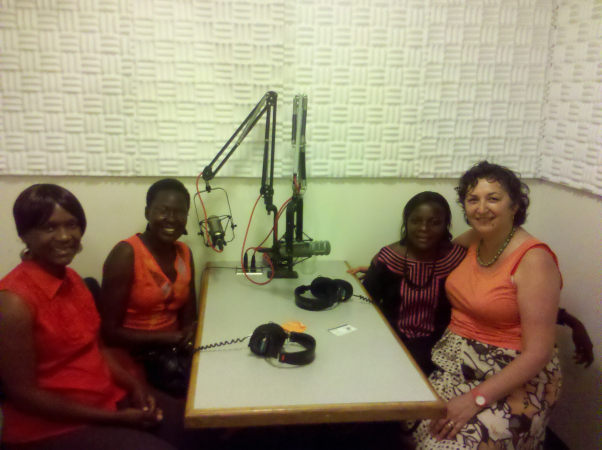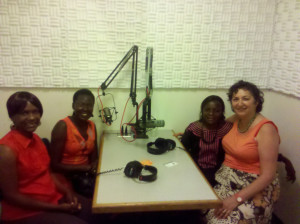Corporations, the Public’s Health and Astorturf
Understanding the influence of corporations on the public’s health today requires increasingly sophisticated skills for decoding propaganda as deep-pocketed corporations turn to astroturfing to influence health policy. The public relations strategy known as “astroturfing,” is a form of corporate-driven, top-down advocacy that is disguised to look like bottom-up, grassroots community activism.
In the U.S., the energy in public health is focused around regulating food and beverages with high-fructose corn syrup. In case this controversy has passed you by, high-fructose corn syrup is an extremely common additive to foods and beverages that damages health in a variety of ways.
Manufacturers are keen to leave it in products because for palates accustomed to it, it can be tasty and addictive, so it increases purchases and profits for food companies. Borrowing from effective strategies in the fight against tobacco, some public health advocates want to discourage the consumption of high-fructose corn syrup by making it cost more. This effort is sometimes referred to by the shorthand “soda tax.” Several initiatives have been proposed to establish a soda tax to alleviate budget shortfalls and to help pay for health care reform. Not surprisingly, food and beverage manufacturers see this as an attack on their bottom-line and are lobbying hard against any and all soda tax initiatives.
In the Internet era of easily disguised URL’s and no gatekeepers to vet what gets published, this kind of disinformation is harder to detect than ever. I’ve written here before about “cloaked websites” – websites that intentionally disguise authorship in order to put forward a political agenda – and these are a central tool of corporate propaganda in the digital era, including the battle around the soda tax. For example, the URL “www.nofoodtaxes.com” will take you to this site:

At first glance, it looks like a grassroots movement of everyday people concerned about “big government” and the “difficulty of feeding a family in today’s economy.” The link in the middle (“watch our tv ad!”) takes you to a slickly produced television commercial that aired in heavy rotation on stations in New York State where a soda tax was proposed. In the ad, a “concerned mother” posing as just a concerned citizen, talks directly to the camera and engages her assumed audience in a shared sense of outrage at the intrusion of big government imposing more taxes on hard-working families.
In fact, “Americans Against Food Taxes” is a cloaked site and is part of a front group funded and organized by the American Beverage Association, to protect industry interests. However, it can be very difficult to tell what’s a front group. The text on this website says that Americans Against Food Taxes is a “coalition of concerned citizens – responsible individuals, financially strapped families, small and large businesses in communities across the country” who opposed a government-proposed tax on food and beverages, including soda, juice drinks, and flavored milks. However, the real membership is the world’s largest food and soft drink manufacturers and distributors, including the Coca-Cola Company, Dr. Pepper-Royal Crown Bottling Co., PepsiCo, Canada Dry Bottling Co. of New York, the Can Manufacturers Institute, 7-Eleven Convenience Stores, and Yum! Brands.
Corporations that have a negative impact on the public’s health are especially adept at this sort of strategy.
In some ways, these sorts of propaganda efforts are not new. Going back to 1995, the tobacco giant Philip Morris hired PR Firm Burson-Martsteller to create “The National Smokers Alliance,” an early astroturf group. The purpose of the group was to stop Federal legislation intended to curb smoking by young people, a policy change that would have improved the public’s health by reducing tobacco-related deaths, and it would have hurt Philip Morris’ bottom line by reducing the number of future smokers. In this pre-Internet astroturf campaign, Burson-Martseller organized mailings and ran a phone-bank urging people to call or write to politicians expressing their opposition to the federal law.
The National Smokers Alliance continued its efforts against any legislation that would prevent new teen smokers through the late 1990s. In 1998, the group added television ads with a 1-800 number to call to its arsenal of techniques, along with phone-banking and mailing. According to The New York Times, “Those smokers who are reached by phone banks sponsored by cigarette makers, or who call the 800 number shown in television ads, are patched through to the senator of their choice.” Since then, public health advocates have managed to win major victories over big tobacco in the realm of popular opinion in the United States, yet many of these stealth marketing tactics continue unabated in other countries.
So, how do people concerned about the public’s health – or, even their own personal health – make sense of all this? How do we parse top-down, corporate propaganda from actual bottom-up, community-led efforts at activism?
On the one hand, it can be a difficult task. Some argue that astroturf is just another form of organizing. As one strategist accused of astroturfing against health care reform writes in a 2009 New York Times op-ed, “Organizing isn’t cheating. Doing everything in your power to get your people to show up is basic politics. If they believe what they’re saying, no matter who helped organize them, they’re citizens and activists.” This kind of sophistry, “it’s not astroturf, it’s just organizing,” is a common argument made by those trying to defend such tactics.
On the other hand, it’s not all that difficult to parse propaganda from facts if you ask two questions about the information we encounter online (or anywhere, really): 1) where is this information coming from? and 2) who stands to benefit from this information?
If the answers to both those questions are “a giant corporation,” chances are it’s astroturf. The chances are also good that it’s bad for the public’s health.
~ Jessie Daniels, PhD is a Senior Fellow of the Center for Health, Media and Policy. This post is a re-blog from Corporations and Health Watch, where she is a contributing writer. Her new book, called Google Bombs, Cloaked Sites and Astroturf: Propaganda in the Digital Era, is forthcoming from Routledge.
Understanding the influence of corporations on the






